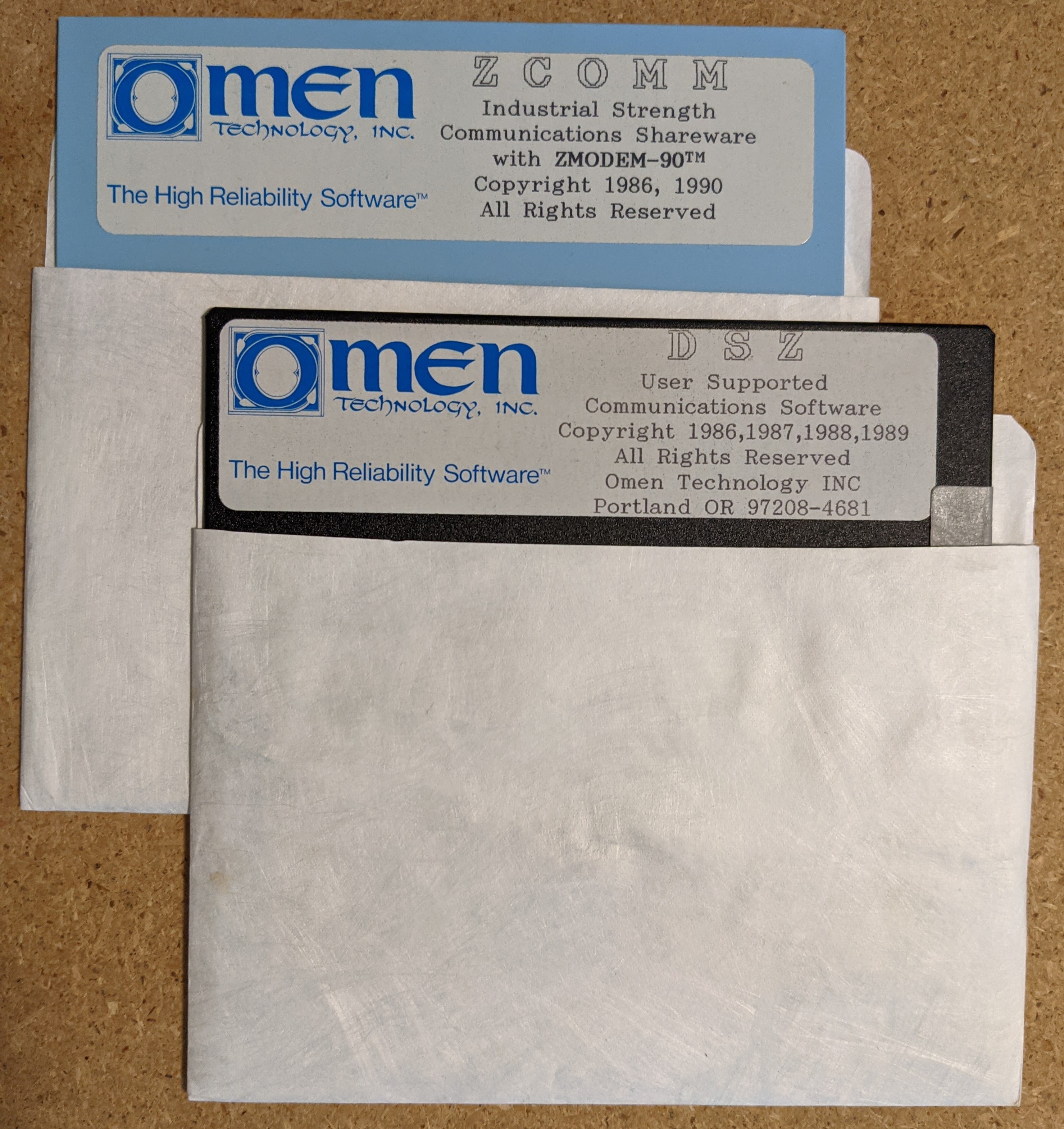|
YModem
YMODEM is a file transfer protocol used between microcomputers connected together using modems. It was primarily used to transfer files to and from bulletin board systems. YMODEM was developed by Chuck Forsberg as an expansion of XMODEM and was first implemented in his CP/M YAM program. Initially also known as YAM, it was formally given the name "YMODEM" in 1985 by Ward Christensen, author of the original XMODEM. YMODEM extended XMODEM in three ways, combining features found in other extended XMODEM varieties. Like XMODEM-CRC, YMODEM replaced the 8-bit checksum with a 16-bit cyclic redundancy check (CRC), but made it the default form of correction instead of optional. From TeLink it added the "block 0" header that sent the filename and size, which allowed batch transfers (multiple files in a single session) and eliminated the need to add padding at the end of the file. Finally, YMODEM allowed the block size to be increased from the original 128 bytes of data to 1024, as in XMODEM ... [...More Info...] [...Related Items...] OR: [Wikipedia] [Google] [Baidu] |
ZMODEM
ZMODEM is an inline file transfer protocol developed by Chuck Forsberg in 1986, in a project funded by Telenet in order to improve file transfers on their X.25 network. In addition to dramatically improved performance compared to older protocols, ZMODEM offered restartable transfers, auto-start by the sender, an expanded 32-bit CRC, and control character quoting supporting 8-bit clean transfers, allowing it to be used on networks that would not pass control characters. In contrast to most transfer protocols developed for bulletin board systems (BBSs), ZMODEM was not directly based on, nor compatible with, the seminal XMODEM. Many variants of XMODEM had been developed in order to address one or more of its shortcomings, and most remained backward compatible and would successfully complete transfers with "classic" XMODEM implementations. This list includes Forsberg's own YMODEM. ZMODEM eschewed backward compatibility in favor of producing a radically improved protocol. It perfor ... [...More Info...] [...Related Items...] OR: [Wikipedia] [Google] [Baidu] |
Protocol For File Transfer
This article lists communication protocols that are designed for file transfer over a telecommunications network. Protocols for shared file systems—such as 9P and the Network File System—are beyond the scope of this article, as are file synchronization protocols. Protocols for packet-switched networks A packet-switched network transmits data that is divided into units called '' packets''. A packet comprises a header (which describes the packet) and a payload (the data). The Internet is a packet-switched network, and most of the protocols in this list are designed for its protocol stack, the IP protocol suite. They use one of two transport layer protocols: the Transmission Control Protocol (TCP) or the User Datagram Protocol (UDP). In the tables below, the "Transport" column indicates which protocol(s) the transfer protocol uses at the transport layer. Some protocols designed to transmit data over UDP also use a TCP port for oversight. The " Server port" column indica ... [...More Info...] [...Related Items...] OR: [Wikipedia] [Google] [Baidu] |
Chuck Forsberg
Charles Alton "Chuck" Forsberg (May 6, 1944 – September 24, 2015) developed two data transmission protocols popular in the 1990s, for uploading and downloading files from dial-up bulletin board systems. He received a Dvorak Award for Excellence in Telecommunications in 1992 for developing ZMODEM. He was also the project engineer on the Tektronix 4010-series graphics terminals. The widely adopted ZMODEM uses a sliding window protocol. Rather than wait for positive acknowledgment after each block is sent, it sends blocks in rapid succession and resends unacknowledged blocks later. By avoiding delays due to latency, the bandwidth usable for transmission more closely approached the bandwidth of the underlying link. ZMODEM could also resume interrupted transfers without retransmitting the already-received blocks. In addition to developing the protocol, Forsberg developed software for sending and receiving files using ZMODEM. Forsberg then wrote a version, Zmodem G, which was f ... [...More Info...] [...Related Items...] OR: [Wikipedia] [Google] [Baidu] |
File Transfer
File transfer is the transmission of a computer file through a communication channel from one computer system to another. Typically, file transfer is mediated by a communications protocol. In the history of computing, numerous file transfer protocols have been designed for different contexts. Protocols A file transfer protocol is a convention that describes how to transfer files between two computing endpoints. As well as the stream of bits from a file stored as a single unit in a file system, some may also send relevant metadata such as the filename, file size and timestamp - and even file system permissions and file attributes. Some examples: * FTP is an older cross-platform file transfer protocol * SSH File Transfer Protocol a file transfer protocol secured by the Secure Shell (SSH) protocol * Secure copy (''scp'') is based on the Secure Shell (SSH) protocol * HTTP can support file transfer * Bittorrent, Gnutella and other distributed file transfers systems use peer-to-peer * ... [...More Info...] [...Related Items...] OR: [Wikipedia] [Google] [Baidu] |

